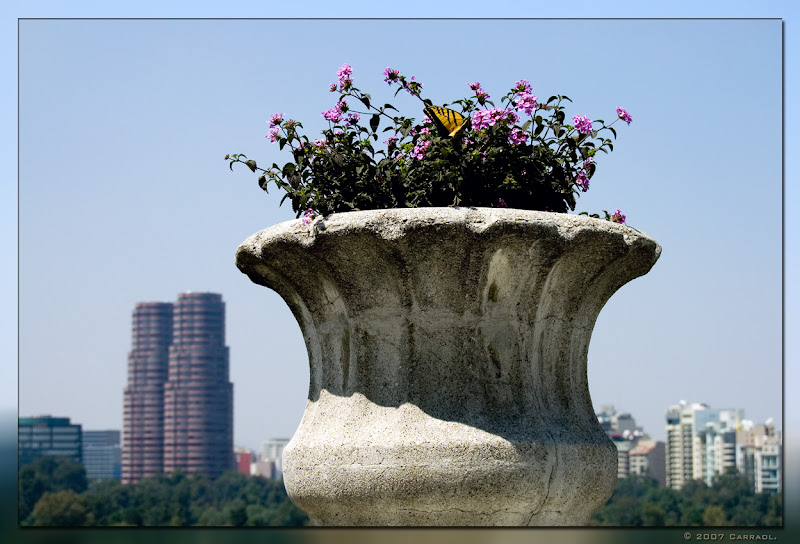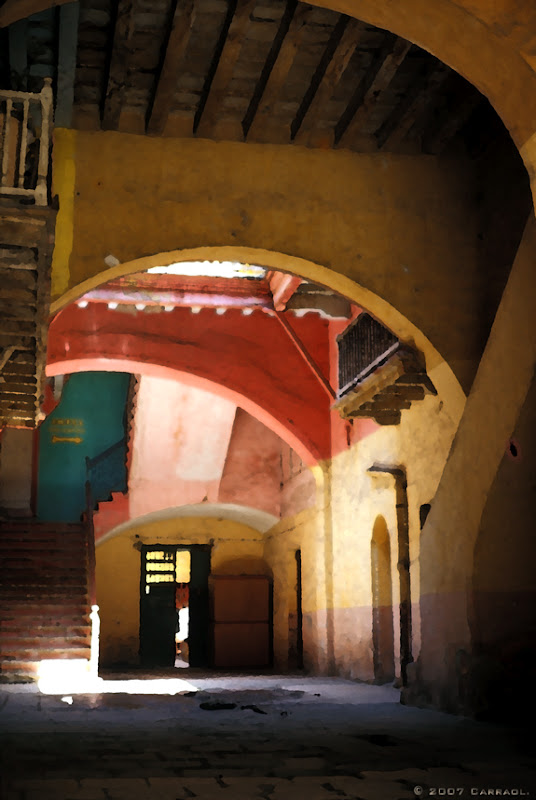
Gracias por su visita / Thanks for visiting!
The Magic of the Cities.
Zen promotes the rediscovery of the obvious, which is so often lost in its familiarity and simplicity. It sees the miraculous in the common and magic in our everyday surroundings. When we are not rushed, and our minds are unclouded by conceptualizations, a veil will sometimes drop, introducing the viewer to a world unseen since childhood. ~ John Greer

Exhibition at the San Francisco Atrium, Historic Center.
Frida Kahlo[1](July 6, 1907 – July 13, 1954) was a Mexican painter who is now the best-known artist Latin America has produced. She painted using a vibrantly colored style which was influenced by the indigenous culture of Mexico as well as European influences which include Realism, Symbolism, and Surrealism. Many of her works are self-portraits symbolically expressing her own pain. Kahlo was married to and influenced by the Mexican painter of murals Diego Rivera and shared his Communist views. Although she has long been recognized as an important painter, public awareness of her work has become more widespread since the 1970's. Her "Blue" house in Coyoacán, Mexico City is a popular museum, donated by Diego Rivera after her death in 1954. From Wiki.








The Castillo de Chapultepec (translated as "Castle of Chapultepec") is a castle built on top of Chapultepec Hill (Chapultepec comes from Náhuatl chapoltepēc and means "at the grasshopper hill"), located in the middle of Chapultepec Park in Mexico City at a height of 2,325 meters above sea level. The building has been used for several purposes during its history, including Military Academy, Imperial and Presidential residence, observatory and museum. It currently houses the Mexican National Museum of History. It is the only castle in North America that was occupied by European sovereigns. [Wiki.]

"Telamons of Tula / Atlantes de Tula"
The old city of Tula had a great historical relevance in Mesoamerica, and it constitutes an important link in the chain of civilizations of the Central Altiplano.
Founded after Teotihuacán was destroyed, it is known nowadays by its main pyramid, Tlahuizcalpantecuhtli, or temple of the morning star, on whose top the Telamons of Tula stand. 4.6 meter high statues, representing Toltec gods, they are believed to be the columns of a wooden roof the temple had.You can go up this pyramid to observe the telamons closely, and appreciate the whole archeological complex. From GoToLatin. You can see this front view.

El Ángel de la Independencia ("The Angel of Independence"), most commonly known by the shortened name El Ángel and officially known as Columna de la Independencia, is a victory column located on a roundabout over Paseo de la Reforma in downtown Mexico City.
El Ángel was built to commemorate the centennial of the beginning of Mexico's War of Independence, celebrated in 1910. In later years it was made into a mausoleum for the most important heroes of that war. It is one of the most recognizable landmarks in Mexico City, and it has become a focal point for both celebration or protest. It bears a resemblance to the Victory Column in Berlin. From Wiki.

The Palacio de Bellas Artes ("Palace of Fine Arts") is the premier opera house of Mexico City. The building is famous for both its extravagant art nouveau exterior in imported Italian white marble and its murals by Diego Rivera, Rufino Tamayo, David Alfaro Siqueiros, and José Clemente Orozco. From Wiki. A view from within.

House in the Rome district, at Chihuahua street.
Art Nouveau (French for 'new art') is an international style of art, architecture and design that peaked in popularity at the beginning of the 20th century (1880-1914) and is characterised by highly-stylised, flowing, curvilinear designs often incorporating floral and other plant-inspired motifs. From Wiki.

The city of Veracruz is a major port city and municipality on the Gulf of Mexico in the Mexican state of Veracruz. The metropolitan area is Mexico's third largest on the Gulf coast (after Tampico and Coatzacoalcos) and an important port on Mexico's east coast. It is located 105 km(65 mi.) along Federal Highway 140 from the state capital Xalapa, and is the state's most populous city, with a population of 444,438 in the city and 512,310 in the municipality, according to the 2005 census. The municipality has an area of 241 km² (93.05 sq mi). From Wiki.

Xochimilco is better known for its extended series of canals — all that remains of the ancient Lake Xochimilco. Xochimilco has kept its ancient traditions, even though its proximity to Mexico City influence that area to urbanize. Movies like Maria Candelaria (1940), have given that area a romantic reputation where all inhabitants travel in colourful trajineras (Xochimilco boats) between chinampas covered with flowers. Today, agriculture is an important but minor activity -- the canals represent only a small fraction of their former extent. Chinamperia (chinampa-related activities) was declared a World Heritage site by UNESCO in 1987. From Wiki.